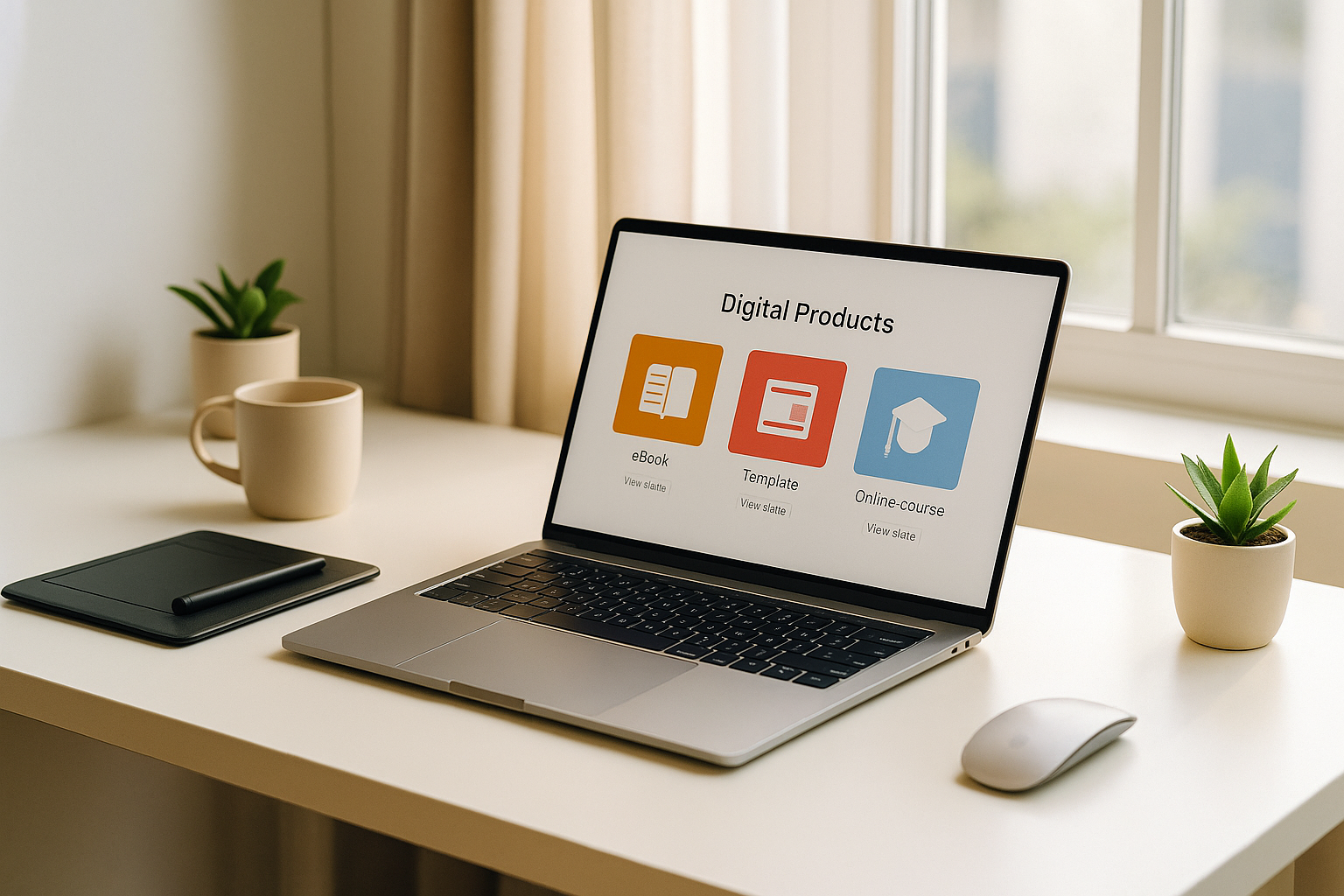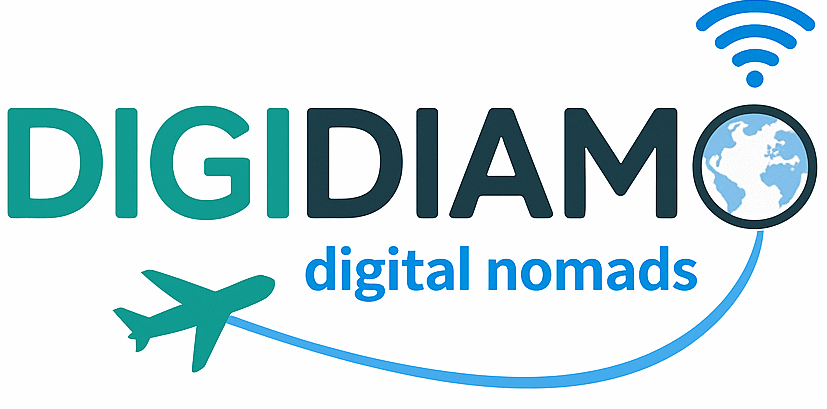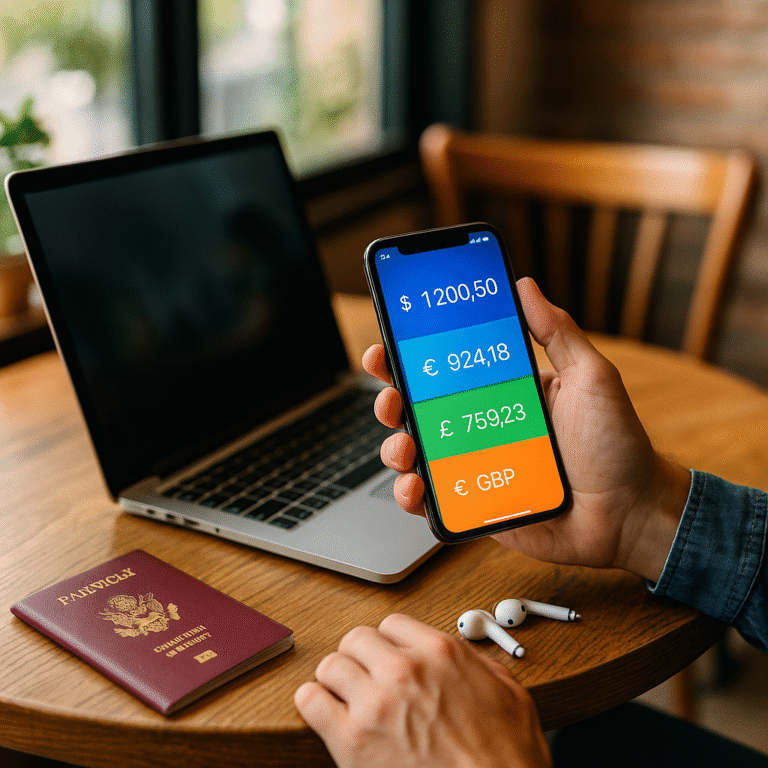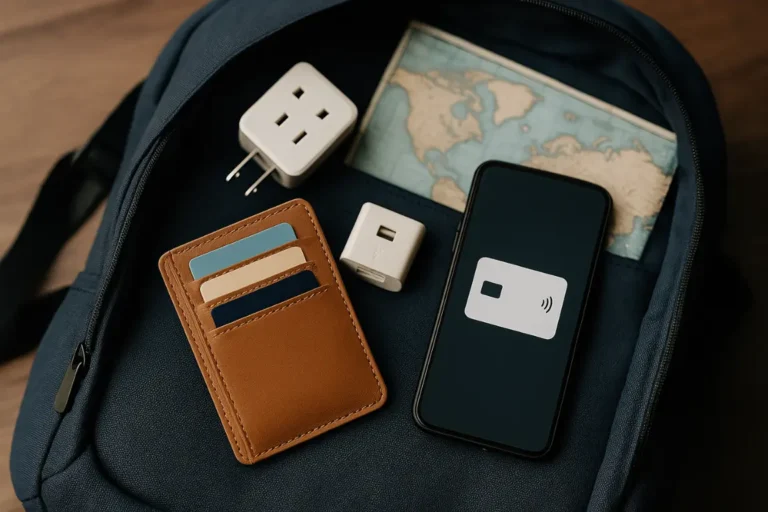How to sell digital products online in 2026
Launching a digital product is one of the lightest ways to earn location-independent income. You create once and deliver forever, no shipping required, no border delays. When sales run on autopilot you can swap long workdays for morning surf sessions. If you need a wider snapshot of all nomad revenue paths the updated guide to earning as a digital nomad sets the full context.
Why digital products suit nomad life

A PDF, preset pack, or video course lives on cloud storage. Buyers receive access the second payment clears. Your workload is front-loaded into creation and marketing. After that upkeep means occasional updates and friendly support messages. This rhythm leaves room for slow travel and spontaneous side quests.
Cost of entry is also low. Most creators use tools they already own: a laptop, a decent microphone, and screen-record software. Hosting platforms charge a small transaction fee, leaving a healthy margin even at modest prices.
Picking a product idea worth shipping
Start with problems you solve for friends. If three people ask for your Notion budgeting template, dozens more likely need it. Focus on outcomes rather than information. A template that cuts weekly planning time in half beats a twenty-page ebook on theory.
Run a quick test:
- Post a one-sentence teaser on X, LinkedIn, or in a niche Slack group.
- Track comments and direct messages for interest.
- Offer a preorder discount. Even five paid preorders validate demand better than likes.
Avoid jumping into saturated topics unless you bring a fresh angle. A Lightroom preset pack stands out when built for travel photographers who shoot in dusty desert light, not generic sunsets.
Validating price and positioning
Price anchors perception. Too low and buyers doubt quality. Too high without proof and cart abandonment climbs. Use three tiers:
- Starter: core product, one use case.
- Pro: extra assets, video walkthrough, community invite.
- Team: licence for multiple users, priority support.
Early supporters lock the product at the starter price. Later you add value and raise rates. Transparency rewards early adopters and funds improvements.
Building the product
Templates and toolkits
Canva, Notion, Figma, and Google Sheets remain favourites. Duplicate the file and share a view-only link wrapped in a simple PDF guide. Keep instructions short with step-by-step bullet points.
Video courses
Screenflow or Loom record lessons. Chop modules into five-to-ten-minute clips to aid retention. Host on platforms like Gumroad, Podia, or ThriveCart Learn. Include closed captions for accessibility.
Audio and presets
WAV and Lightroom packs zip into small downloads. Add a read-me file covering installation and licence terms to avoid repeat questions.
Interactive mini-apps
Bubble or Glide app builders let non-coders release useful calculators in days. Export as a template and charge a higher rate because setup is involved.
Setting up payments and delivery
Stripe and PayPal remain staples, yet Wise and Payoneer handle multi-currency without steep conversion fees. Use a checkout tool that embeds VAT handling for the EU and UK. Gumroad and Lemon Squeezy manage this automatically.
Automated delivery looks like:
- Purchase triggers email with access link.
- Customer signs in and receives download plus bonus content.
- A day later an automated email checks satisfaction and invites feedback.
This sequence keeps support tickets low and reviews high.
Launching without an email list
If you lack a large audience borrow one. Partner with a creator who serves a complementary niche. Offer them a generous affiliate share on first sales. Record a live session where you solve a real problem using your product. Viewers see value in action and can buy on the spot.
Time launches around events. A budgeting sheet sells well in January when people reset finances. A content planner finds traction before Q4 marketing pushes.
Evergreen marketing channels
- SEO: Write a tutorial that solves the same problem your product addresses, then embed a call-out block midway.
- Social proof threads: Share behind-the-scenes lessons on LinkedIn. End with a light mention plus link in first comment.
- Community help: Answer questions in Facebook or Discord groups. Reference your product only when it directly aids the asker.
- Paid retargeting: Pixel visitors and run low-budget ads reminding them of the outcome they wanted.
Automating support while remaining human
Create a searchable FAQ in Notion or Zendesk. Tag common tickets for future feature ideas. Offer office hours once a month on Zoom. Customers feel seen and you gather feedback in real time.
Use a generic email address yet sign messages with your first name. Simple personal touches build trust even through templates.
Handling refunds and updates
A thirty-day no-questions policy eases purchase anxiety and rarely hurts net revenue. Monitor refund reasons. If the same objection appears twice adjust sales copy to clarify scope.
Updates revive sales. Announce a new module or template extension and raise price after a grace period. Early customers receive upgrades free which turns them into repeat promoters.
Legal and tax basics
Include a licence statement covering personal versus commercial use. For larger packs add a line barring redistribution. Store transaction records in cloud accounting software. Many tax offices accept PDF invoices so you can file from abroad.
If digital sales exceed threshold limits in the EU or UK register for VAT MOSS or OSS. It sounds dull but protects you from fines. Platforms that collect and remit VAT can keep you under limits longer.
Common mistakes and how to dodge them
| Misstep | Prevention |
|---|---|
| Launching before validation | Secure paid preorders first |
| Overbuilding features | Ship an MVP then iterate from feedback |
| Ignoring customer stories | Share wins on landing pages for social proof |
| Relying on a single platform | Mirror files on a backup host |
Case story: Budget Buddy template
Last year I built a Notion sheet to map earnings and expenses by city. I shared a screenshot in a travel finance group. Ten people asked for the file. I packaged it with a four-page PDF and sold ten copies at USD 9 each in the first week. Reviews highlighted a need for auto currency conversion so I integrated an API and raised the price to USD 19. Revenue has covered every visa fee since.
Key takeaways:
- Start simple
- Listen to user friction
- Raise prices as value grows
Final thoughts
Digital products compress expertise into repeatable assets. They earn while you board trains and recharge on long layovers. Focus on a single clear outcome, validate demand, and build processes that run without constant supervision.
When you are ready to layer more revenue on top the affiliate marketing playbook shows how to earn commissions by recommending tools you already use.






